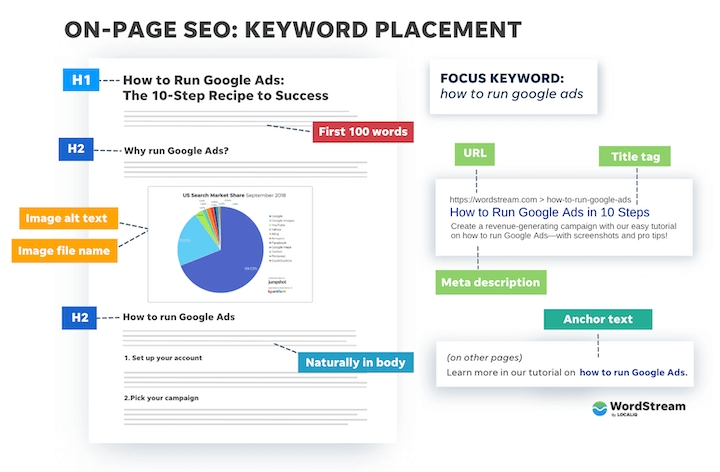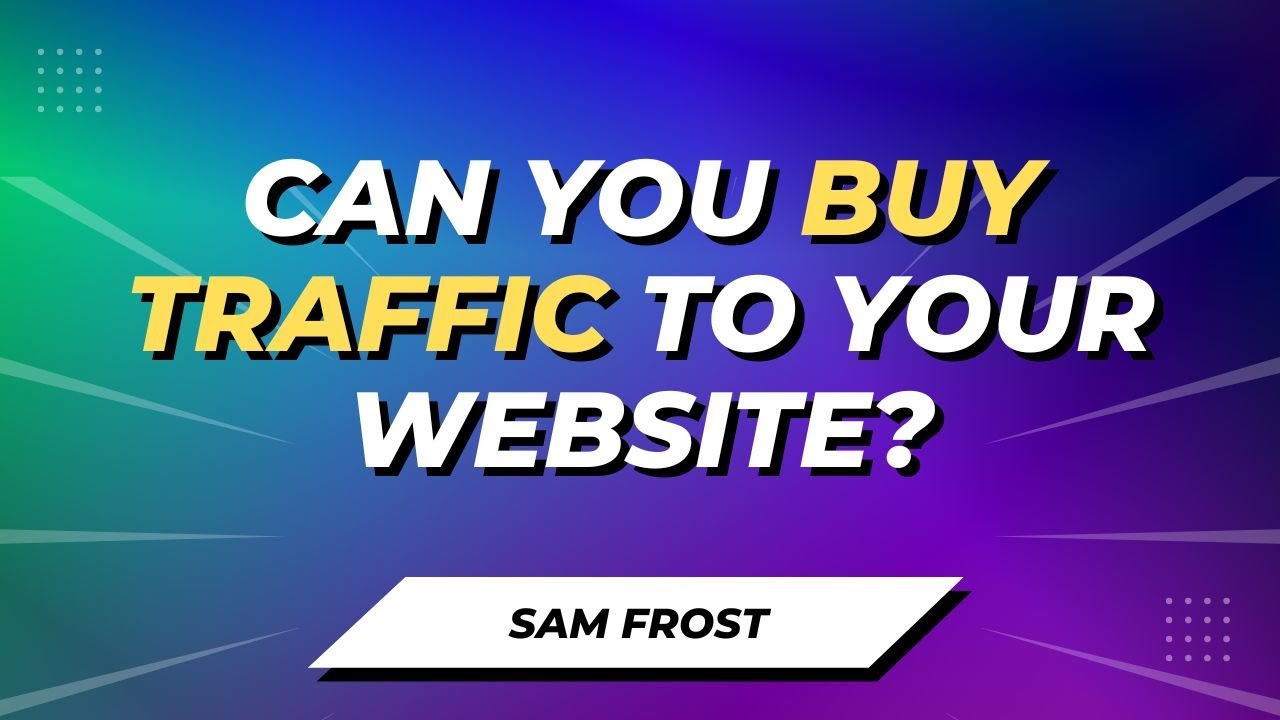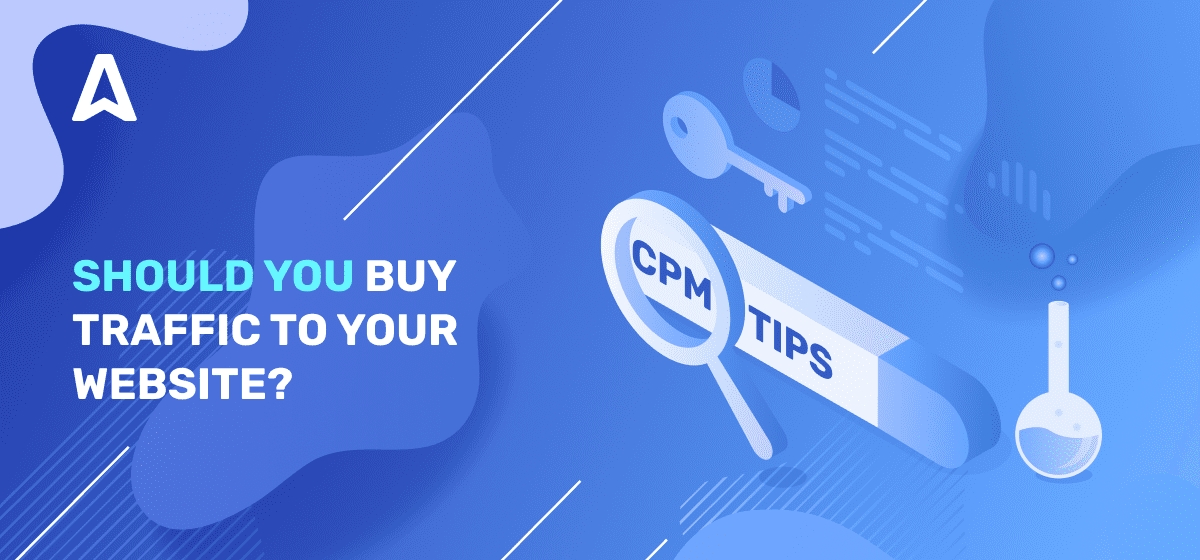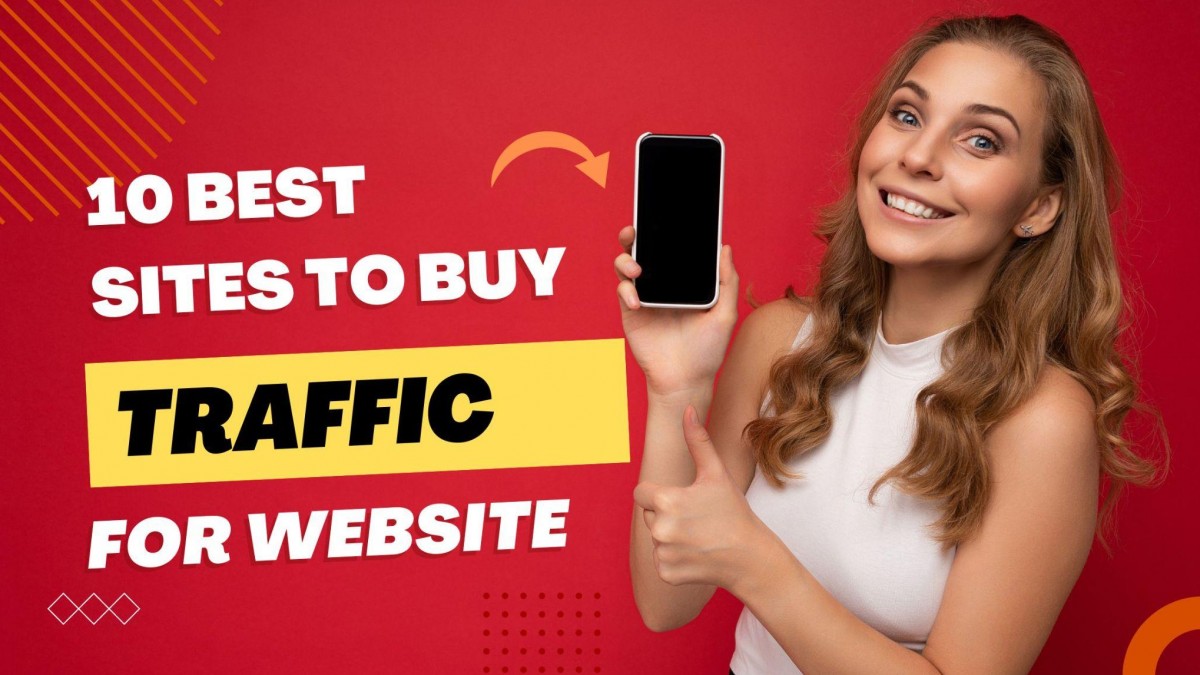Tips for Successfully Buying Website Traffic
Buy CPC Traffic | Buy Display Ads | Exclusive traffic sources | Buy Push Ads | Popunder ADS | Buy Native Ads | Buy Preroll Ads

Buy CPC Traffic | Buy Display Ads | Exclusive traffic sources | Buy Push Ads | Popunder ADS | Buy Native Ads | Buy Preroll Ads
Driving traffic to your website is crucial for its success, but getting visitors to your site can be challenging. One effective way to boost your website's traffic is by purchasing it. This strategy allows you to reach a wider audience and increase your online visibility. However, successfully purchasing traffic requires careful planning and strategy. In this article, we will share some tips on how to effectively purchase traffic for your website.
1. Identify your target audience: Before purchasing traffic, it's important to identify your target audience. Understanding who your ideal customers are will help you choose the right sources and channels to reach them. Research their demographics, interests, and online behavior to create targeted campaigns that resonate with them.
2. Set clear goals: When purchasing traffic, it's essential to set clear goals for what you want to achieve. These goals could be increasing sales, generating leads, or driving more engagement on your website. By having specific goals in mind, you can measure the effectiveness of your traffic purchase and make necessary adjustments to optimize your results.
3. Choose reputable traffic providers: With so many traffic providers available, it's important to choose reputable ones. Look for providers that have a proven track record and positive reviews from other customers. Avoid purchasing traffic from questionable sources, as it may not be genuine and could harm your website's reputation.
4. Monitor and analyze your traffic: Once you start purchasing traffic, it's crucial to monitor and analyze its performance. Use tracking tools and analytics software to measure key metrics such as conversion rates, bounce rates, and engagement levels. This data will help you identify any issues or areas for improvement and make data-driven decisions.
5. Test and optimize: Purchasing traffic is an ongoing process that requires constant testing and optimization. Experiment with different traffic sources, ad formats, and targeting options to find what works best for your website. Continuously monitor your results and make adjustments to your campaigns based on the data you collect.
In conclusion, purchasing traffic can be a valuable strategy to boost your website's visibility and attract more visitors. By following these tips, you can successfully purchase traffic for your website and achieve your desired goals.
Benefits of Purchasing Traffic for Your Website
Driving traffic to your website is crucial for its success, but relying solely on organic methods may not always be enough. In today's competitive online landscape, purchasing traffic has become a popular strategy for businesses
Determining Your Target Audience
Before purchasing traffic for your website, it is crucial to determine your target audience. Knowing who your audience is will help you make more informed decisions about the type of traffic you should invest in.
Here are some steps to help you determine your target audience:
1. Define your website's purpose

Start by clearly defining the purpose of your website. Is it an e-commerce store selling specific products or services? Is it a blog targeting a particular niche? By understanding the main goal of your website, you can better identify the audience that would be interested in your content or offerings.
2. Conduct market research

Conducting thorough market research is essential for identifying your target audience. Look at your competitors and analyze their target audience. Who are they targeting? What are their demographics, interests, and online behavior? This information can provide valuable insights into potential audience segments you may want to consider.
3. Analyze your website analytics
Use web analytics tools to gain insights into your current website visitors. Look at their demographics, location, and behavior patterns. This data can help you identify trends and patterns that can guide your decisions when purchasing traffic.
4. Create buyer personas
Create detailed buyer personas to represent your ideal customer. These personas should include demographic information, interests, pain points, and motivations. Having a clear understanding of your target audience through buyer personas will make it easier to purchase traffic that aligns with their needs and preferences.
5. Choose the right traffic source
Once you have a clear understanding of your target audience, it's time to choose the right traffic source. There are various options available, including search engine advertising, social media advertising, and popunder ads. Evaluate each option based on your target audience's preferences and behavior to determine which source is most likely to bring relevant traffic to your website.
By taking the time to determine your target audience, you can make more informed decisions when purchasing traffic for your website. This will help you attract visitors who are more likely to engage with your content or convert into customers, ultimately leading to a successful website.
Researching Effective Traffic Sources
When it comes to purchasing traffic for your website, it is crucial to research and identify effective traffic sources. Without proper research, you may end up wasting your money on traffic that doesn't convert or bring any value to your website. Here are some steps to help you research and identify effective traffic sources:
Define Your Target Audience
Before you start researching traffic sources, it is important to clearly define your target audience. Understanding who your ideal customers are will help ensure that the traffic you purchase is relevant and more likely to convert. Consider demographics, interests, and behavior of your target audience.
Conduct Keyword Research
Keyword research is an essential part of researching effective traffic sources. By identifying relevant keywords and phrases related to your products or services, you can explore different traffic sources that align with those keywords. Use keyword research tools to find popular and high-converting keywords.
Explore Different Traffic Sources

Now that you have your target audience and keywords in mind, it's time to explore different traffic sources. Some popular traffic sources include search engine advertising, social media advertising, affiliate marketing, and display advertising. Research each traffic source to understand its benefits, targeting options, and pricing.
Consider the reach and relevance of each traffic source. For example, if your target audience spends a lot of time on social media, investing in social media advertising might be a good option. Look for traffic sources that have a track record of delivering high-quality traffic.
Read Reviews and Testimonials
Before making a final decision, read reviews and testimonials from other website owners who have purchased traffic from the sources you're considering. Their experiences and insights can give you a better understanding of the effectiveness of each traffic source. Pay attention to reviews that mention conversion rates, targeting options, and customer support.
Set a Budget and Test
Once you have narrowed down your options, set a budget for purchasing traffic and start testing different sources. It is recommended to start with a small budget and gradually increase it as you find the most effective sources. Monitor the performance of each traffic source closely and make adjustments as needed.
Remember, researching effective traffic sources is an ongoing process. Keep testing and experimenting with different sources to find the ones that bring the best results for your website.
Setting a Budget for Your Traffic Purchase

When it comes to purchasing traffic for your website, it is important to set a budget to ensure you are getting the most value out of your investment. Without a proper budget, you may overspend or not reach your desired goals.
Here are some essential steps to help you set a budget for your traffic purchase:
Evaluate your financial capabilities
First, you need to evaluate your financial capabilities and determine how much you are willing to invest in buying traffic. Consider your overall marketing budget and allocate a portion of it specifically for website traffic. This will help you determine the maximum amount you can spend on traffic acquisition.
Define your campaign goals

Next, decide what you want to achieve with your traffic purchase. Are you looking to increase sales, generate leads, or drive more traffic to your website? Defining your campaign goals will help you determine how much traffic you need and how much you are willing to spend on it.
For example, if your goal is to increase sales, you may want to invest in high-quality traffic sources like popunder ads that have a higher chance of converting into paying customers.
Research traffic costs

It is crucial to research and understand the costs associated with buying traffic. Different traffic sources and ad networks offer various pricing models, such as CPC (cost per click) or CPM (cost per thousand impressions). Take the time to compare prices and choose the most cost-effective option for your budget and goals.
Monitor and adjust

Once you have set your budget and launched your traffic campaign, it is essential to monitor its performance regularly. Keep an eye on key metrics such as conversion rate, click-through rate, and return on investment. If necessary, adjust your budget accordingly to optimize your results and ensure you are getting the best possible outcome for your investment.
By setting a budget for your traffic purchase and carefully planning your campaign, you can make the most of your investment and drive valuable traffic to your website.
Evaluating the Quality of Traffic
When purchasing traffic for your website, it is essential to evaluate its quality to ensure that you are investing in the right sources. Evaluating the quality of traffic can help you determine whether it aligns with your goals and target audience, and whether it will bring you the desired results.
1. Source Reputation

One of the first things to consider when evaluating the quality of traffic is the reputation of the source. Research the traffic provider or platform and check for reviews, testimonials, and case studies. Look for reputable sources that have a track record of delivering high-quality traffic.
2. Traffic Metrics
Examining different traffic metrics can give you insights into its quality. Look at metrics such as bounce rate, time on site, and page views per session. High bounce rates and low time on site may indicate low-quality traffic, as visitors might not be genuinely interested in your content.
Bounce Rate
Lower than 50%
Time on Site
Higher than 2 minutes
Page Views per Session
More than 2 pages
3. Targeting Options
Consider the targeting options provided by the traffic source. The more granular the targeting options, the more likely the traffic will be relevant to your website. Look for options to target by demographics, interests, locations, and devices.
Evaluating the quality of traffic before purchasing can save you time and money in the long run. By ensuring that the traffic aligns with your goals and target audience, you increase the chances of achieving the desired results for your website.
Tracking and Analyzing Traffic Performance
Once you have purchased traffic for your website, it is crucial to track and analyze its performance. This will help you understand the effectiveness of your traffic acquisition strategy and make informed decisions to optimize your campaigns. There are several key metrics and tools that you can use to track and analyze traffic performance.
Key Metrics
There are several important metrics that you should monitor to evaluate the success of your traffic acquisition:
Visitors
This metric shows the total number of unique visitors to your website. It helps you understand the overall volume of traffic your website is receiving.
Pageviews
This metric represents the total number of pages viewed by visitors. It gives you insights into how engaging your website content is and whether visitors are exploring multiple pages.
Bounce Rate
This metric measures the percentage of visitors who leave your website without taking any further action. A high bounce rate may indicate that your website is not meeting visitors' expectations or that your traffic sources are not targeting the right audience.
Conversion Rate
Conversion rate is the percentage of visitors who complete a desired action, such as making a purchase or filling out a form. This metric helps you assess the effectiveness of your website in achieving its goals.
Tools for Tracking and Analysis
There are various tools available that can help you track and analyze your website's traffic performance:
Google Analytics: This free tool provides comprehensive insights into your website's traffic. It allows you to track the aforementioned metrics and provides detailed reports on user behavior, traffic sources, and more.
Heatmap Tools: Heatmap tools, such as Hotjar or Crazy Egg, can visualize user behavior on your website. They provide heatmaps that show where users are clicking, scrolling, or spending the most time. These insights can help you identify areas of improvement and optimize your website for better user engagement.
Conversion Tracking Tools: If your goal is to drive conversions, conversion tracking tools like Google Ads Conversion Tracking or Facebook Pixel can help you track specific actions taken by users on your website. They allow you to measure the effectiveness of your advertising campaigns and make data-driven optimizations.
By regularly tracking and analyzing your website's traffic performance, you can identify areas for improvement, optimize your traffic acquisition strategy, and ultimately increase the success of your website.
Optimizing Your Website for Increased Conversions
When purchasing traffic for your website, it's crucial to ensure that your website is optimized for increased conversions. Here are some key strategies to consider:
1. Clear and Compelling Call-to-Action
Your website should have a clear and compelling call-to-action (CTA) that guides your visitors towards the desired action. Whether it's making a purchase, signing up for a newsletter, or filling out a form, the CTA should be placed prominently and be easily noticeable.
2. User-Friendly Navigation
A user-friendly navigation is essential to provide a seamless browsing experience for your visitors. Make sure that your website has intuitive menus and navigation elements that help users find the information they need quickly and easily. A well-organized website structure can contribute to increased conversions.
3. Engaging Content

High-quality and engaging content can significantly impact your website's conversion rate. Create content that is relevant, informative, and addresses the needs and pain points of your target audience. Utilize different forms of content such as blog posts, videos, and infographics to engage your visitors and encourage them to take the desired action.
4. Mobile Optimization
In today's mobile-driven world, optimizing your website for mobile devices is crucial. Ensure that your website is responsive and provides a seamless user experience across different devices. A mobile-friendly website can increase conversions by catering to the growing number of mobile users.
5. Trust Signals
Building trust with your visitors is essential to encourage conversions. Incorporate trust signals such as client testimonials, security badges, and social proof to establish credibility. These signals can help alleviate any concerns your visitors may have and increase their confidence in taking the desired action.
By implementing these optimization strategies, you can maximize the effectiveness of purchased traffic and increase your website's conversions. Keep tracking the performance of your website and make adjustments as needed to continuously improve your conversion rate.
What is website traffic?
Website traffic refers to the number of users who visit a website. It is a measure of the popularity and reach of a website.
Why is it important to have traffic for a website?
Having traffic is important for a website because it increases the visibility and exposure of the website. More traffic can lead to more conversions, sales, and revenue.
What are the different ways to purchase traffic for a website?
There are several ways to purchase traffic for a website. Some common methods include using pay-per-click advertising, display advertising, social media advertising, and influencer marketing.
How can pay-per-click advertising help in purchasing website traffic?
Pay-per-click advertising allows website owners to bid for ad placements on search engines or advertising platforms. When someone clicks on the ad, the website owner pays a predetermined amount. This method can drive targeted traffic to a website.
What factors should be considered when purchasing traffic for a website?
When purchasing traffic for a website, it is important to consider factors such as the target audience, budget, advertising platforms, and the quality of the traffic. It is also crucial to track and analyze the results to optimize the effectiveness of the traffic purchase.
What is website traffic and why is it important?
Website traffic refers to the number of visitors that come to a website. It is important because it indicates the popularity and reach of a website, and can lead to increased sales or engagement.
How can purchasing traffic benefit my website?
Purchasing traffic can benefit your website by increasing the number of visitors and potential customers. It can help boost your website's visibility and attract a targeted audience, leading to increased conversions and revenue.
What are some popular methods of purchasing traffic for a website?
There are several popular methods of purchasing traffic for a website, such as search engine advertising (e.g. Google AdWords), display and banner advertising, social media advertising, and influencer marketing. Each method has its own benefits and target audience.
How can I ensure that the traffic I purchase is high-quality and relevant?
To ensure high-quality and relevant traffic, it is important to research and select reputable advertising platforms or networks. Look for platforms that offer targeting options to reach your specific audience and track the performance of your campaigns to optimize them for maximum results.
Are there any risks or challenges associated with purchasing website traffic?
There can be risks and challenges associated with purchasing website traffic, such as the possibility of receiving low-quality or bot traffic that does not convert. It is important to carefully choose advertising platforms, monitor campaign performance, and make adjustments as necessary to mitigate these risks.
Buy CPC Traffic | Buy Display Ads | Exclusive traffic sources | Buy Push Ads | Popunder ADS | Buy Native Ads | Buy Preroll Ads
2022-2024 @ How to Successfully Purchase Traffic for Your Website